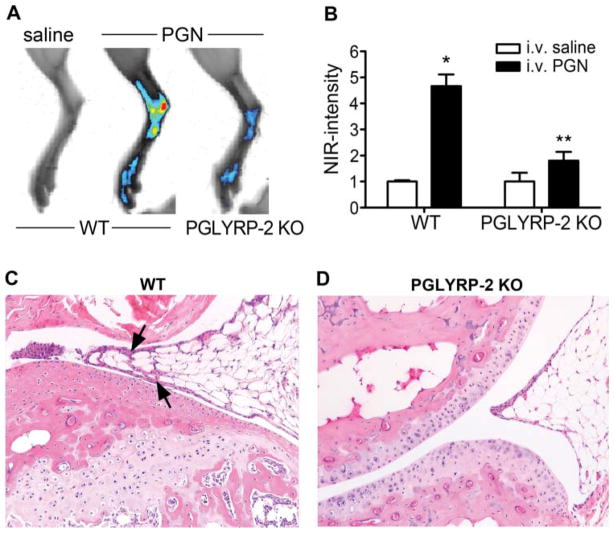Figure 1.
Systemic peptidoglycan (PGN) exposure predisposes to inflammatory arthritis. Severity of ankle inflammation was assessed in wild-type (WT) and PGLYRP-2 knockout (KO) mice 72 h after systemic PGN or saline exposure. (A) Representative NIR-images of the ankle. (B) Quantification of NIR-fluorescence intensity; *p<0.05 comparison with saline controls within a genotype, **p<0.05 comparison between PGN-treated WT and PGLYRP-2 KO mice (n=10 mice/treatment/genotype). (C) and (D) are representative histological images of ankle joints from WT and PGLYRP-2 KO mice, respectively (H&E stain, original magnification at 200 ×). Arrows indicate proliferation of synovial membrane that coincides with a minor cellular infiltrate in the WT mice, which is absent in the PGLYRP-2 KO mice. H&E, haematoxylin and eosin.

